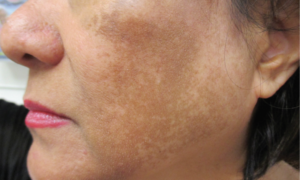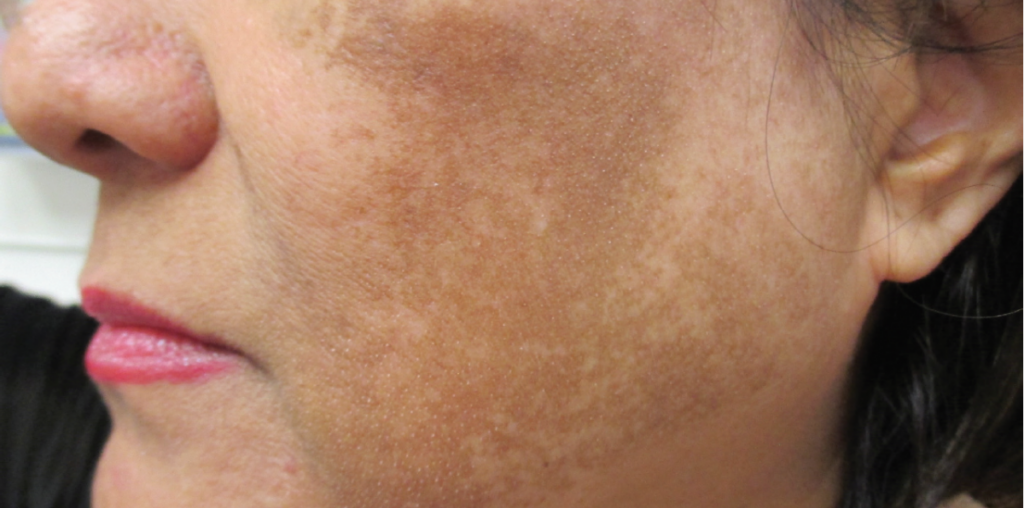Dermal pigmentation is a common skin concern that affects individuals of all skin types. This condition is characterized by the presence of dark patches or spots on the skin that can result from various factors, including sun exposure, hormonal changes, and skin damage. As a growing issue in urban areas, many people seek treatments to address their pigmentation concerns. If you’re considering options for Dermal Pigmentation in Abu Dhabi, understanding the efficacy of available treatments is essential. In this blog post, we will explore various treatment methods that are commonly used for dermal pigmentation removal while aiming to equip you with comprehensive knowledge.
Understanding Dermal Pigmentation
What Causes Dermal Pigmentation?
- Sun Exposure: Ultraviolet (UV) rays can lead to an overproduction of melanin, resulting in dark spots.
- Hormonal Changes: Conditions such as pregnancy or hormonal disorders can trigger fluctuations in melanin levels.
- Skin Damage: Injuries, acne scars, and inflammation can stimulate excessive melanin production as a healing process.
- Age: With aging, the skin undergoes changes that may result in increased pigmentation.
Types of Dermal Pigmentation
- Melasma: Often appearing as symmetrical patches on the face, particularly in women.
- Lentigines: Also known as liver spots or age spots, often associated with sun exposure.
- Post-Inflammatory Hyperpigmentation (PIH): Resulting from inflammation or injury to the skin.
Understanding these various causes helps practitioners tailor effective treatments for individuals based on the root cause of their pigmentation concerns.

Effective Treatments for Dermal Pigmentation
Topical Treatments
Hydroquinone
Hydroquinone is a skin-lightening agent widely used for treating hyperpigmentation. It works by inhibiting melanin production, enabling the fading of dark spots over time. This treatment is often combined with other agents for enhanced results.
Retinoids
Retinoids, including retinol, encourage cell turnover, revealing newer, unblemished skin beneath. They can effectively treat pigmentation by promoting the shedding of pigmented cells, thus reducing the appearance of dark spots.
Chemical Peels
Alpha Hydroxy Acids (AHAs)
AHAs, such as glycolic acid, assist in exfoliating the upper layers of the skin. Regular treatment with AHAs can improve skin texture and reduce pigmentation by removing pigmented skin cells.
TCA Peels
Trichloroacetic acid (TCA) peels are a stronger option that penetrates deeper into the skin compared to AHAs. TCA peels can target more pronounced pigmentation concerns by encouraging significant skin regeneration.
Laser Treatments
Q-Switched Laser
The Q-switched laser is effective in targeting melanin in the skin without damaging surrounding tissues. This treatment delivers quick, precise pulses of energy that break down pigment, making it an excellent choice for various pigmentation types.
Fractional Laser Resurfacing
Fractional laser resurfacing targets specific areas of pigmentation while promoting collagen production. This treatment not only addresses pigmentation but also improves the overall skin texture sustainably.
Light Therapy
Intense Pulsed Light (IPL)
Intense Pulsed Light technology utilizes various wavelengths of light to target melanin in the skin. IPL is a versatile treatment option that can help reduce pigmentation while promoting skin rejuvenation.
LED Therapy
LED therapy, particularly using red and blue light, can aid in reducing inflammation and improving skin color. Although it may not be as potent as laser options, it serves as an excellent complementary treatment.
Microneedling
Microneedling employs tiny needles to create micro-injuries in the skin, prompting the body’s natural healing process. This treatment enhances the absorption of topical agents and stimulates collagen production, effectively helping reduce pigmentation over time.
Lifestyle and Home Remedies
Sun Protection
Consistent sun protection is vital for preventing further pigmentation. Using broad-spectrum sunscreen and wearing protective clothing can significantly mitigate UV damage.
Dietary Considerations
A diet rich in antioxidants and vitamins can promote skin health. Including foods high in Vitamin C and E can help protect skin against damage, thus helping prevent pigmentation.
Hydration
Staying hydrated ensures your skin remains healthy and resilient. Proper hydration supports the skin’s natural healing mechanisms and enhances its overall appearance.
The Importance of a Personalized Approach
Consultation with a Skin Care Professional
Every individual’s skin is unique. Consulting with a skin care professional can help determine the best treatment plan tailored to your specific needs and concerns. This personalized approach ensures that the chosen methods are effective and safe for your skin type.
Patch Testing
Before commencing any treatment, conducting a patch test is crucial. This simple step helps gauge how your skin will react to a specific product or treatment, minimizing the risk of adverse effects.
Maintaining Results After Treatment
Consistent Follow-Up
Post-treatment skincare is crucial. Following a structured skincare routine recommended by a professional can enhance and maintain results, ensuring long-lasting improvements.
Adjusting Your Routine
As skin regenerates, it may require adjustments in your skincare routine to continue benefiting from treatments. Evaluating and modifying products based on evolving skin conditions helps maintain desired outcomes.
Frequently Asked Questions (FAQs)
1. How Long Does It Take to See Results from Dermal Pigmentation Treatments?
Results can vary depending on individual skin types and the treatment utilized. Many patients begin to notice improvements within a few weeks, but optimal results may take several months.
2. Can Dermal Pigmentation Be Prevented?
While completely preventing dermal pigmentation can be challenging, using sunscreen, avoiding excessive sun exposure, and adhering to a healthy skincare regimen can significantly reduce the risk.
3. Is Treatment for Dermal Pigmentation Suitable for All Skin Types?
Most treatments can be tailored to suit various skin types, but it is essential to consult a skin care professional to determine the best approach based on your unique skin characteristics.
4. Do I Need to Change My Skincare Routine After Treatment?
After receiving treatment for dermal pigmentation, it’s crucial to follow a tailored skincare regimen recommended by your professional to maintain results and prevent new pigmentation issues from arising.
Conclusion
When it comes to addressing skin pigmentation issues, a variety of treatment options are available, each with its unique mechanism of action and benefits. Whether considering topical solutions, laser therapies, or chemical peels, maintaining a holistic approach that includes sun protection and personalized skincare is key to achieving and sustaining results. If you’re exploring options for Dermal Pigmentation in Abu Dhabi, take the time to thoroughly educate yourself and consult professional advice to ensure an informed decision in your journey to a clearer, more radiant complexion.



